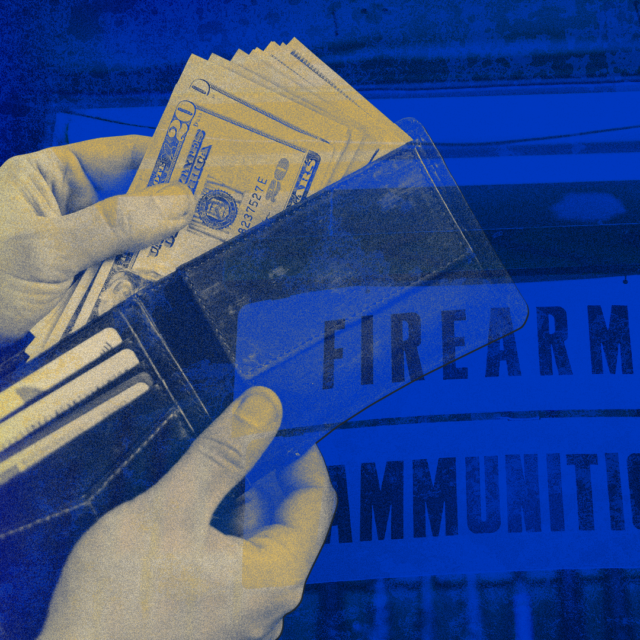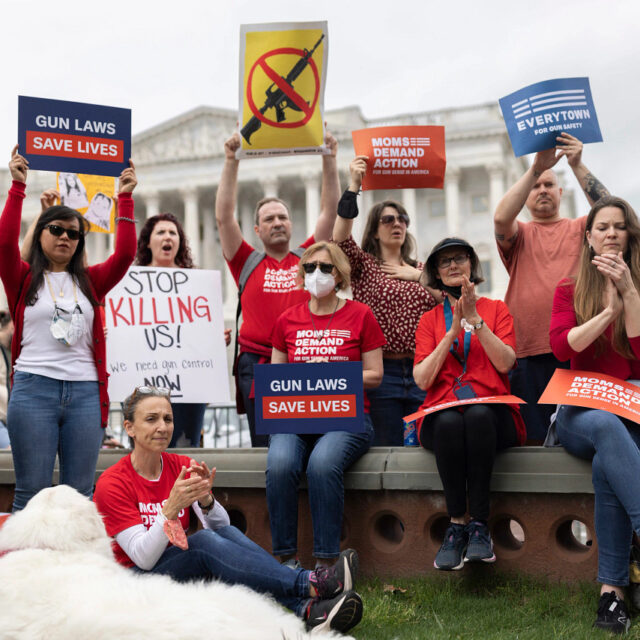Bottom Line
Assault weapons and high-capacity magazines are commonplace in mass shootings and make shootings more deadly. H.R. 1808 would regulate these dangerous weapons, prevent mass shooting injuries, and save lives, while not overly restricting the possession of assault weapons by law-abiding gun owners.
H.R. 1808 would prohibit the manufacture of assault weapons and high-capacity magazines, except for use by law enforcement and the armed forces. It defines “assault weapon” as a semi-automatic firearm capable of accepting a detachable magazine and having one or more military characteristics including a pistol grip, a forward grip, a barrel shroud, a threaded barrel, or a folding or telescoping stock. The bill covers 205 firearm models by name and exempts more than 2,200 models by name. Anyone lawfully in possession of a covered assault weapon or high-capacity magazine when H.R. 1808 is enacted would be allowed to keep it. Future sales or transfers of assault weapons possessed prior to enactment would be subject to background checks under H.R. 1808.
H.R. 1808 does not overly restrict the possession or transfer of assault weapons by law-abiding gun owners. Importantly, H.R. 1808:
- Does not ban all assault weapons and high-capacity magazines.
- Does not prohibit, penalize, or criminalize gun owners who are in lawful possession of an assault weapon or high-capacity magazine before enactment of the bill.
- Does not require gun owners in lawful possession of an assault weapon or high-capacity magazine to surrender it upon enactment of the bill.
- Does not require any state, city, or law enforcement agency to conduct buy-backs.
- Does not prohibit gun owners currently in lawful possession of an assault weapon from selling or transferring the assault weapon after enactment.
- Does not restrict law enforcement or other government agencies from continuing to possess assault weapons and high-capacity magazines.
Assault weapons and high-capacity magazines are exceptionally deadly
- Assault weapons and high-capacity magazines are frequently used in mass shootings, resulting in more deaths and injuries.
- Assault weapons are high-powered semiautomatic firearms and generally fire rounds with up to four times the muzzle velocity of a handgun round. This means that each round from an assault weapon inflicts greater damage to the human body than a round from a typical handgun. Mass shootings that involve an assault weapon result in six times as many people shot on average.
- High-capacity magazines allow a shooter to fire more rounds without pausing to reload. The more rounds a shooter can fire consecutively, the more gunshot wounds they can inflict during an attack. Mass shootings that involve a high-capacity magazine result in nearly five times as many people shot on average.
- Between 2009 and 2020, the five deadliest mass shooting incidents in the US all involved the use of assault weapons and/or high-capacity magazines. Assault weapons were also used in recent mass shootings in Buffalo, NY, Uvalde, TX, and Highland Park, IL.
Regulating assault weapons has been proven to save lives
- Research shows that restrictions on assault weapons and high-capacity magazines can help prevent mass shooting injuries and fatalities as well as reduce the devastation of daily gun violence in America.
- Mass shooting fatalities were 70 percent less likely to occur from 1994-2004 when the original federal prohibition on assault weapons and high-capacity magazines was in effect than during the 13 years before and after the prohibition.1Charles DiMaggio et al., “Changes in US Mass Shooting Deaths Associated with the 1994–2004 Federal Assault Weapons Ban: Analysis of Open-Source Data,” Journal of Trauma and Acute Care Surgery 86, no. 1 (2019): 11–19
- Researchers estimate that a federal prohibition on assault weapons would have prevented 314 of 448 mass shooting deaths that occurred while the 1994 prohibition was not in effect.2Id.



